The Völsunga saga from late 13th-century Iceland is an amazing story of love, heartbreak, adventure, violence, and betrayal. It tells the story of a Germanic warrior named Sigurd, the treasure he wins, the politics he gets caught up in, and the bloody aftermath of it all. It’s incredibly gameable! Let’s look at the relevant parts of the saga and see how they lead to a moment that’s perfect for your PCs to show up, get involved, and probably change the course of this amazing story. Plus, it works in just about any setting, and can be easily inserted into an ongoing campaign.
(There are many other versions of this story. Notable examples appear in the Nibelungenlied from the late 12th century, the Poetic Edda from the 13th century, and Richard Wagner’s operatic cycle The Ring of the Nibelung from 1876. The names of the characters are variable across these different sources.)
This post is brought to you by beloved Patreon backer Justin Moor. Thanks for helping keep the lights on! If you want to help keep this blog going alongside Arthur, head over to the Patreon page – and thank you!
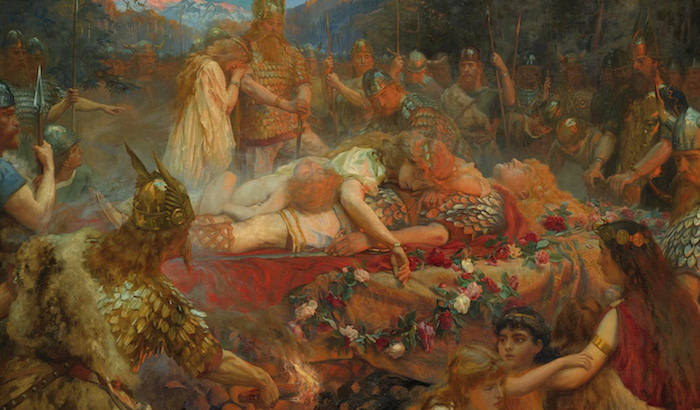
The story is set in a fictional version of Late Antique Germany, as imagined by the storytellers of the High Middle Ages. This was a world of omnipresent violence, where blood feuds spanned generations, marriage alliances created more trouble than they solved, and every petty king and chieftain was obsessed with his own wealth and reputation. It’s also a world of dragons and dwarves, magic swords and ancient gods. Odin and Loki make regular appearances and the White Christ of Jerusalem is nowhere to be seen.
The man who sets the wheel in spin is Sigurd, the last male scion of the Volsungs, a long line of savage warrior-lords. Even by the standards of the setting, the Volsungs were ferocious. Sigurd’s aunt once tricked her own brother into impregnating her so she could bring forth a werewolf child to slay her husband out of revenge for him killing her father. Sigurd proved himself a worthy heir to this savage lineage when he slew the dragon Fafnir and took its hoard. But Fafnir’s gold included a ring cursed to bring death to whoever owned it. With Fafnir slain, the curse passed to Sigurd.
Next we introduce Sigurd’s true love, Brynhild. She was a warrior woman, a shield-maiden, and terribly strong. Brynhild was a loner by nature. She chose to live apart from the rest of her family (the Budlungs) in a tower. She was aggressive, fought in the wars of men as she saw fit, and swore she would only marry once she met a man who knew no fear. Of course, once she met Sigurd, a wandering adventurer who had slain a dragon, the two fell immediately and hopelessly in love. They agreed to marry, and Sigurd gave Brynhild the cursed ring from Fafnir’s hoard as a token of his promise.
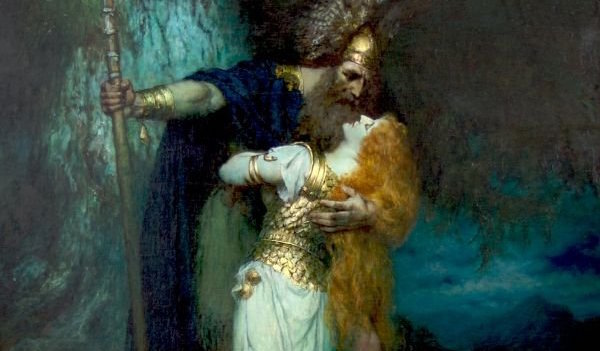
But Sigurd had some more roving to do before he would settle down, so he left Brynhild with a promise to return. He then came to another family, the Giukings. Chief among them was Grimhild, a witch. Grimhild was cunning and thoughtful, a master planner willing to take the long view. She gave Sigurd a potion disguised as beer that made him forget Brynhild. Sigurd, suddenly believing he had no attachments or obligations, decided to stay among the Giukings. He married Grimhild’s daughter, Gudrun, a sensible, good-hearted woman who deeply loved Sigurd even though he never really loved her.
Sigurd also swore an oath to become blood brothers with Gunnar, Grimhild’s firstborn son and Gudrun’s brother. Gunnar was in many ways a mirror of his society. He was a fierce warrior, but never the fiercest. He was courageous, but not fearless. Around Sigurd, he was always second-best, and you can read his relationship with the Volsung as a sort of hero-worship. Gunnar wanted a wife and had his sights set on Brynhild. Sigurd agreed to help. Brynhild had surrounded her tower with fire to keep out any but the truly fearless (i.e., Sigurd), whom she would marry. Gunnar and Sigurd used Grimhild’s magic to swap their shapes, and Sigurd (disguised as Gunnar) charged through the fire to claim Brynhild’s hand. Brynhild was heartbroken that this man was apparently not Sigurd, but she was true to her oath and agreed to marry Gunnar. Sigurd-as-Gunnar took the cursed ring from her, and gave her another ring in its place.
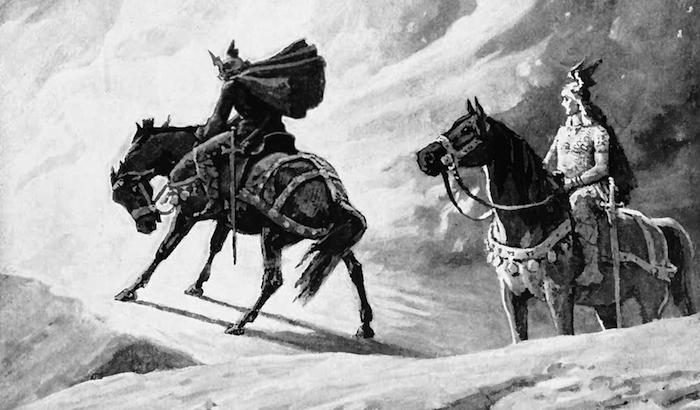
Eventually, of course, the truth came out. Grimhild’s forgetfulness potion faded and Sigurd remembered falling in love with Brynhild. Aggressive Brynhild taunted Gudrun, who retaliated by telling Brynhild she’d been deceived – and showed Brynhild the cursed ring Sigurd-as-Gunnar had taken from her as proof. Everyone was miserable. Sigurd was pining for Brynhild, which strained his marriage to Gudrun. And Brynhild was furious at Sigurd for deceiving her. She ordered Gunnar, her husband, to kill Sigurd, his blood brother.
Gunnar couldn’t bring himself to kill Sigurd, but neither could he refuse his wife. Instead, he turned to his younger brother, Guttorm. Guttorm was young, bull-headed, and eager for violence in the way many young men are. Gunnar got his mother, Grimhild, to mix up a brew of wolf meat and serpent flesh that drove her son Guttorm into a frenzy. He burst into the room where Sigurd was sleeping beside Gudrun and stabbed him to death. Of course, Sigurd was the greatest fighter of the age and slew Guttorm before dying himself in the arms of his loving wife Gudrun, the only person in this story who isn’t a monster. When Brynhild heard the deed was done, her anger turned to grief and she killed herself.
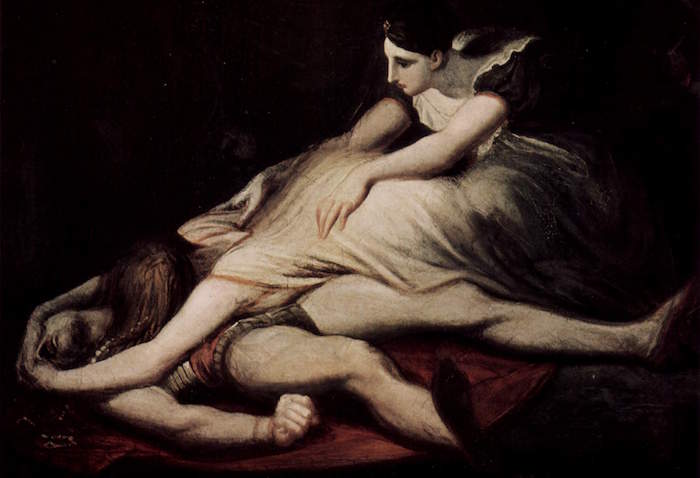
Gudrun ran off to Denmark to grieve. Eventually, Gunnar and Grimhild found her there and offered her great wealth to compensate her for Sigurd’s death and to convince her to marry Atli, Brynhild’s brother and fellow Budlung. Atli was probably based on Attila the Hun. He was prideful, greedy, and cruel. Gudrun was unwilling to go against her family and reluctantly agreed to wed Atli, but the marriage was a cold and loveless one.
The last character to introduce is Vingi, Atli’s chief councillor. Vingi was a smooth talker, someone who could convince anyone of anything, and could spot his lord’s worst impulses and bring them forth. For Atli craved the gold of Fafnir’s hoard – gold which Grimhild and Gunnar now possessed, and which Atli believed was his by right of marriage to Gudrun, who was once Sigurd’s wife. Vingi was tasked with devising a plan to betray Gunnar and Grimhild and acquire the gold for Atli.
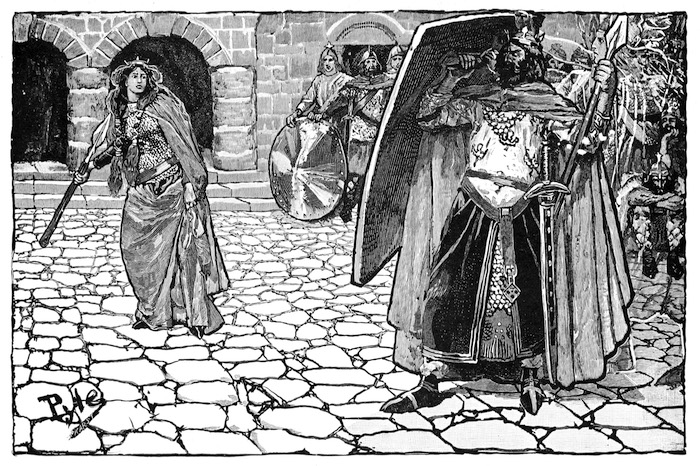
To recap, the major NPCs are:
Volsungs
•Sigurd Fafnir’s-Bane. Dead. Original owner of the hoard. True love of Brynhild, first husband of Gudrun.
Giukings
• Grimhild. Witch. Mother of Gunnar, Guttorm, and Gudrun.
• Gunnar. Son of Grimhild, husband of Brynhild.• Guttorm. Dead. Son of Grimhild.
• Gudrun. Daughter of Grimhild. Wife first of Sigurd, then of Atli.
Budlungs
• Atli. Second husband of Gudrun.• Brynhild. Dead. Shield-maiden. True love of Sigurd, wife of Gunnar.• Vingi. Chief councillor of Atli.
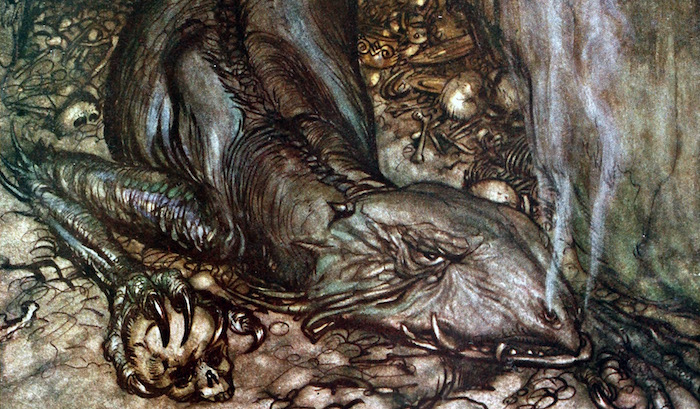
The saga is not quite done here, but this is the perfect place to have the PCs show up. There’s a huge treasure out there somewhere, a cursed ring somewhere too, and two powerful families willing to engage in any sort of politics or warfare to acquire or retain the dragon’s hoard. You can place the characters from these two families in almost any campaign setting that lacks strong central state control. In a science fiction setting, the dragon’s hoard might be the wealth of a lost treasure fleet. In a modern-day setting, it might be the money of an assassinated Russian oligarch. Whatever its nature, the hoard is hidden somewhere and temporarily inaccessible, so whichever side has it can’t just hire a whole bunch of mercenaries and win easily.
Let the PCs hear about the dragon’s hoard, and watch them turn into a third party angling for the gold. Maybe the Giukings or Budlungs offer to take the PCs on as partners and promise them a share of the treasure – but plan to betray them before paying up! Alliances of convenience among the three groups (Giukings, Budlungs, and the PCs) may form and fall apart in every session. The sides themselves may be fluid: individual NPCs may betray their side if they see profit in it. Vingi seems like the sort who’d happily change sides if it suited him. Grimhild already sacrificed her son Guttorm to placate her firstborn and get her hands on Sigurd’s treasure. Maybe she’d do something like that again! And poor Gudrun, the only decent person in this mess, is torn between her Giuking blood-kin and her Budlung husband. She might betray one side or the other if only to stave off further bloodshed.
All that said, in this sort of adventure, the threat of violence must be ever-present, but seldom acted upon. Protect the major NPCs behind legions of soldiers and bodyguards. Assassins may be going back and forth, but they’re mostly focused on countering the other side’s assassins. The death of any individual NPC can totally shift the balance of power, so you want to avoid it except when strictly necessary. And while an out-and-out battle is a terrific climax for an adventure like this, it also means the end of the adventure. Don’t let it come to that until you’re ready.
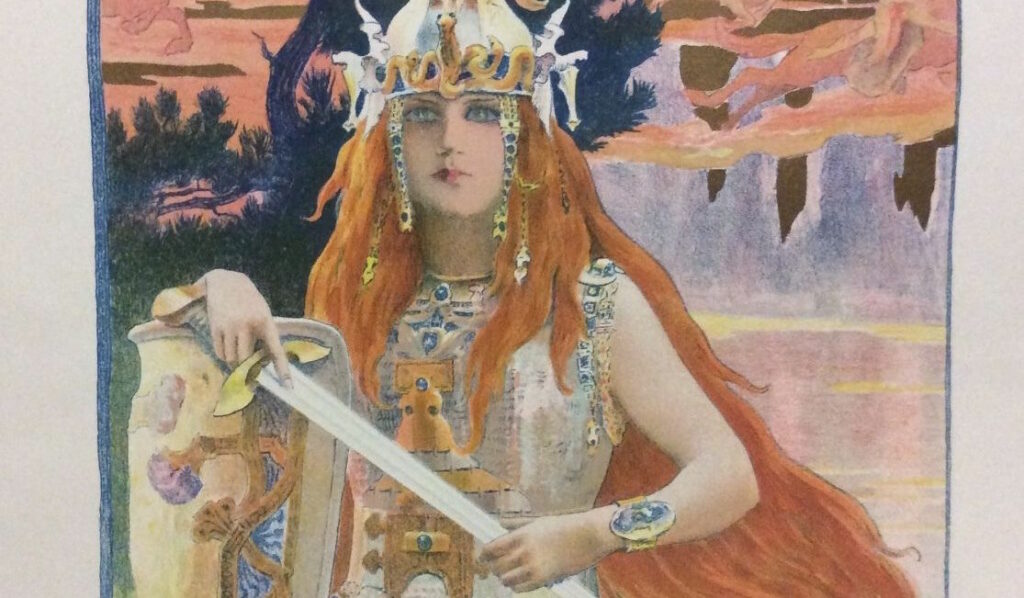
In the real Völsunga saga, the only one to survive was Gudrun. Vingi tricked Gunnar into bringing his army to a feast with Atli’s army. Atli’s army surrounded Gunnar’s people. Gunnar realized Vingi tricked him and killed the scheming councillor. Gunnar then refused to tell Atli where he he had hidden the gold. There was a battle. Gunnar was captured and executed. (It’s unclear what happened to his witch mother.)
In revenge, Gudrun became as monstrous as the rest. She cut the throats of her two children by Atli. She mixed their blood in his wine and roasted their hearts for his dinner. Then she killed him while he slept and burned down his hall with all his retainers still inside. And when Gudrun tried to drown herself, the sea would not take her, but spat her up on a distant shore.
Fafnir’s hoard is presumably still out there somewhere, waiting for the right person to find it. And of the cursed ring, who can say where it has gone?






